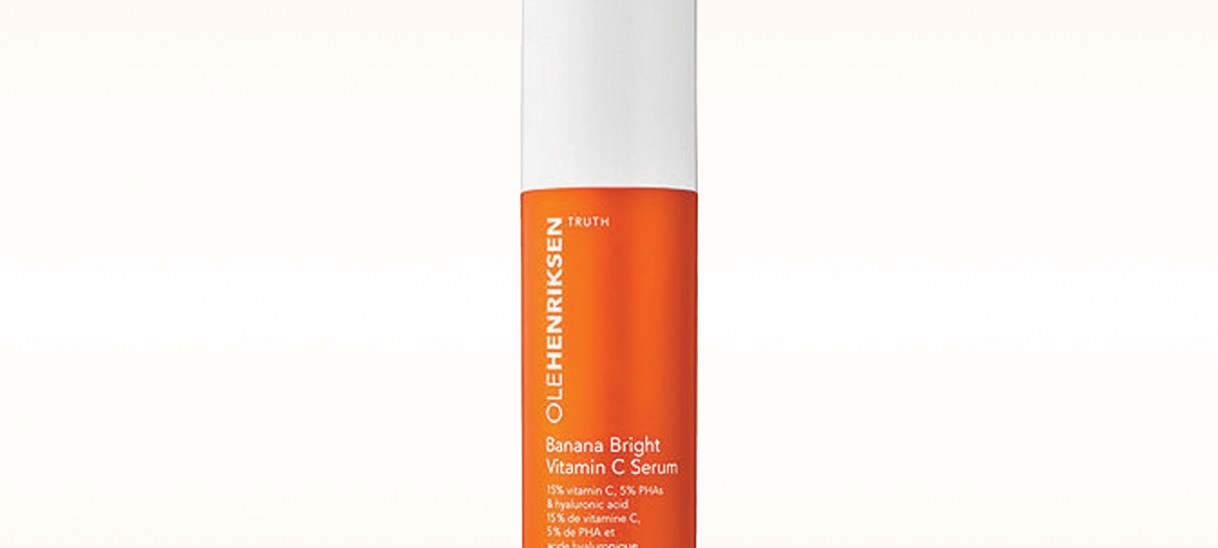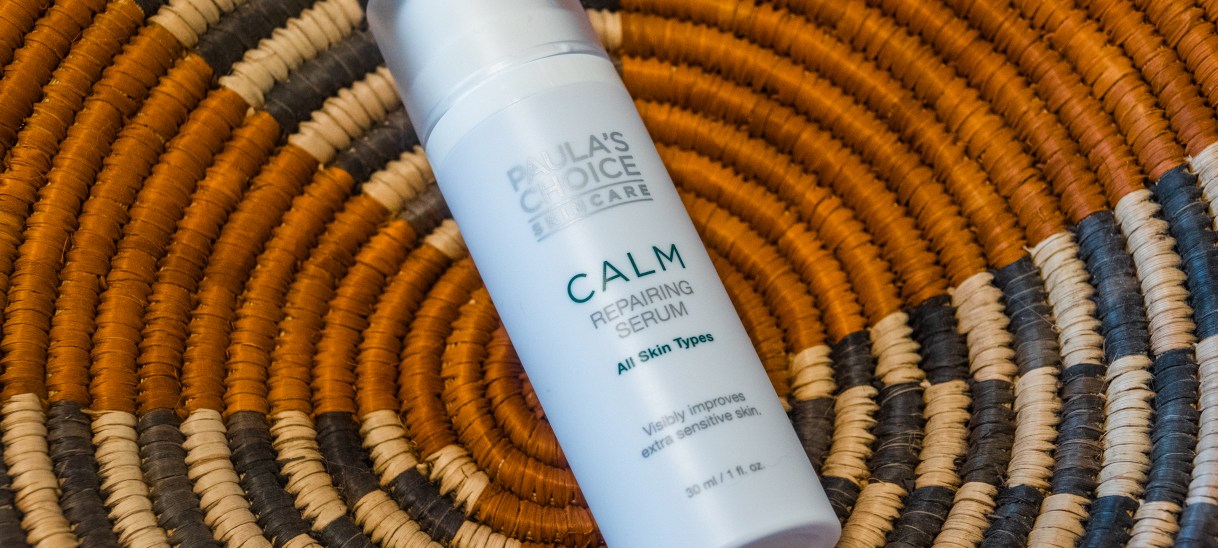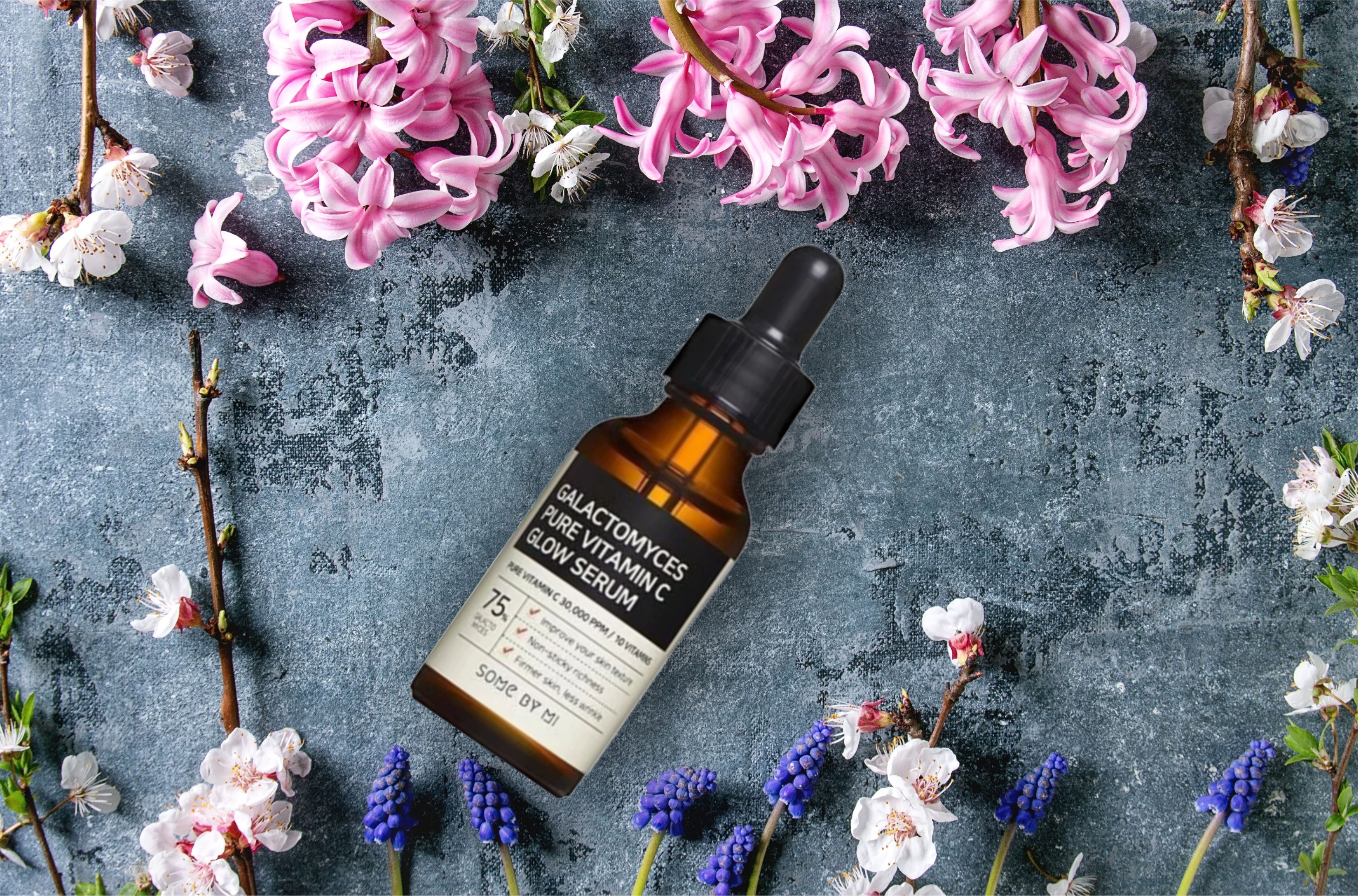
I picked up my Ole Henriksen Banana Bright Vitamin C Serum from Sephora at the beginning of my Tretinoin transition. During this time my skin was extremely sensitive and my regular vitamin C serums were stinging my skin. Since this formulation made use of a vitamin c derivative I thought it may be a gentler option for use during my skin’s transition period.
The serum was just what I like in terms of consistency – water-based, lightweight, easily absorbed and did not leave a tacky residue.
After initial application the product does make the skin look luminous, but I feel that this is attributed to the mica. The orange tint of the formulation is normal, but as with all vitamin c serums – keep an eye out for colour changes.
The product played well with all my other skincare and make up.
As with most Ole Henriksen formulations, this is fragranced. It has a gentle citrus scent to it that I found rather enjoyable, but if you are sensitive to fragrance components I would suggest going through the ingredients list before purchase.
This serum did exactly what I anticipated it would do and I would say it is a great option for those with vitamin c sensitivities or beginners who are looking for something gentle.
I really enjoyed using this serum during the time that I need something less harsh, but it is not something I would keep on my shelf long term.
The product component is airtight and contains 30ml. It has a shelf life of 12 months, but I easily used mine up in about 2 months.

Product Consistency 
After Application
MY SKIN TYPE
I have pale combination skin with a very oily t-zone. I suffer from enlarged pores, underlying redness and hyperpigmentation.
At times I can be prone to breakouts, but these days they tend to be more hormonal.
HOW TO USE
I apply this serum as part of my morning routine directly after my toner. In my case, I required two pumps to cover my face, neck, and chest. I like to give my vitamin C serums time to absorb before moving on to the next step of my routine. It is very important to remember your sunscreen when using vitamin C in your routine.
THE BRAND
Ole Hendriksen has been around for about 40 years and has a history in the spa world. The aim of the brand is to provide the “Ole Glow”.
The products are cruelty free and they do provide vegan options.
INGREDIENTS
- Aqua/Water/Eau
- 3-O-Ethyl Ascorbic Acid is a stable derivative form of vitamin c.
- Neopentyl Glycol Diheptanoate functions as a non-aqueous skin-softening agent and thickener.
- Gluconolactone is a PHA, which is a very mild chemical exfoliant.
- Cetearyl Olivate functions as an emulsifier and slip agent or texture enhancer.
- Sorbitan Olivate is an emulsifier.
- Triethyl Citrate is a perfuming agent.
- Citrus Sinensis (Orange) Fruit Extract is an antioxidant.
- Helianthus Annuus (Sunflower) Seed Oil is used as an emollient.
- Potassium Hydroxide is an alkaline ingredient used to balance the PH of a product.
- Betaine balances the skin’s hydration.
- Panthenol is a humectant alcohol. This ingredient also promotes wound healing.
- Phenoxyethanol is a preservative.
- Hydroxyacetophenone works as a preservative booster, as well as an antioxidant and soothing agent.
- Aminomethyl Propanol is an alkaline material that is used to set the pH of the cosmetic formula to the right value.
- Acrylates/C10-30 Alkyl Acrylate Crosspolymer is used as a texture enhancer.
- Gluconic Acid is a polyhydroxy acid which is a special type of AHA that strengthens the skin barrier function and helps fight the signs of ageing without irritation.
- Tocopherol is Vitamin E, a well-known antioxidant.
- Glycerin is a skin-replenishing and skin-restoring agent.
- Succinoglycan is a skin-conditioning agent.
- Phytic Acid has the main function of neutralizing metal ions but also has some antioxidant benefits.
- Mica makes a product shine.
- Sodium Metabisulfite is a preservative with antioxidant benefits.
- Sodium Hyaluronate is the salt form of Hyaluronic acid. This salt is a powerful humectant that attracts and holds water to it.
- Hyaluronic Acid is a skin-identical conditioning agent that bonds water to it.
- Caramel is a natural colouring ingredient.
- Dipotassium Glycyrrhizate is the salt form of the main anti-inflammatory ingredients of the liquorice plant. It is used for its soothing and anti-inflammatory properties.
- Sodium Polyacrylate is a handy multi-tasker that thickens up water-based formulas and also has some emulsifying and emulsion stabilizing properties. It has strong water-binding properties.
- Pentaerythrityl Tetra-Di-T-Butyl Hydroxyhydrocinnamate is a preservative that is great at preventing discolouration or other types of oxidative degradation.
- Sodium Phytate is a preservative.
- Rosa Canina Fruit Extract is an antioxidant skin-conditioning agent.
- Hippophae Rhamnoides Extract is a good source of vitamin C as well as various B vitamins, vitamin E, lycopene, phytosterols, and numerous phenolic compounds that provide antioxidant benefit.
- Ascorbic Acid is a form of vitamin C. It is a potent antioxidant and skin-soothing agent that can improve the appearance of signs of ageing.
- Lycium Barbarum Fruit Extract is an antioxidant and skin-softening agent.
- Leuconostoc/Radish Root Ferment Filtrate is a preservative.
- Titanium Dioxide (Ci 77891) is a physical sunscreen.
- Yellow 5 (Ci 19140) is a colourant.
- Red 4 (Ci 14700) is a colourant.
INGREDIENTS TO NOTE
- Citrus Aurantium Dulcis (Orange) Oil has antioxidant properties but is sensitizing. I, however, have had no reaction to it in this formulation.
- Citrus Aurantium Dulcis (Orange) Peel Oil has antioxidant benefits but can be sensitizing.
- Citrus Limon (Lemon) Fruit Extract is said to be a natural skin brightener, but at the same time, it is a known skin sensitizer. In formulations like this, it does not cause me any great concern.
- Citrus Aurantium Dulcis (Orange) Fruit Extract has antioxidant properties but is sensitizing.
- Limonene is comprised of many natural fragrant ingredients. This ingredient can cause sensitivity. Limonene has antioxidant benefits and skin-penetrating benefits, but can be volatile. As it is the last ingredient it does not concern me.
- Linalool is a fragrant component of lavender and coriander. It can be a strong skin sensitizer. It does not bother me in this formulation as it is the second last ingredient.
- Citral is a possibly sensitizing fragrant component.
CLOSING
I purchased Ole Henriksen Banana Bright Vitamin C Serum from Sephora in Doha, Qatar.
This is a very gentle vitamin C serum and it served me well during my Tretinoin transition, unfortunately, my skin tends to respond better to something a little stronger. So now that we have normalized I am moving back to my more traditional vitamin C serums.
Visit my skincare page to read more reviews of products I have tried out.
****I source most of the ingredient explanations from Paula’s Choice website, INCI Beauty, Incidecoder, SkinCarisma and CosDNA.
***Please note that these are simply my opinions. Everyone will have skin that responds differently to different ingredients and formulations.




















